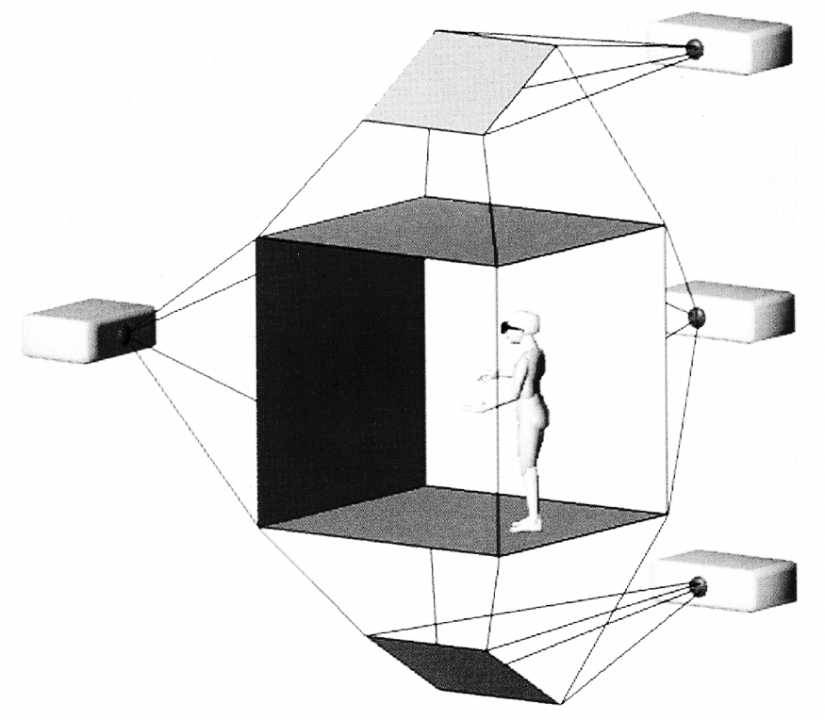|
|
||||||||||||||||||
The CAVE®: Audio Visual Experience Automatic Virtual Environment
Authors: Cruz-Neira, C., Sandin, D., DeFanti, T., Kenyon, R., Hart, J.
Publication: Communications of the ACM, vol 35, no 6, pp. 65-72 The CAVE® is a new virtual reality interface. In its abstract design, it consists of a room whose walls, ceiling and floor surround a viewer with projected images. Its design overcomes many of the problems encountered by other virtual reality systems and can be constructed from currently available technology. Suspension of disbelief and viewer-centered perspective, are often used to describe such systems. Suspension of Disbelief: This term arose from film criticism and is defined as the ability to give in to a simulation - to ignore its medium. The early attempts of the entertainment industry to achieve better suspension of disbelief laid the foundations for current virtual reality research. Suspension of disbelief is a fundamental part of the effective use of a virtual reality interface. Until we can ignore the interface and concentrate on the application, virtual reality will remain a novel experience instead of a serious visualization tool. Viewer-Centered Perspective: The perspective simulation of common visualization systems dates back to the Renaissance, and is based in a mythical camera positioned along an axis extended perpendicular form the center of the screen. Viewer-centered perspective simulates the perspective view from the location of the viewer. To maintain correct perspective, a sensor that continuously reports the viewer’s position to the simulation is commonly used. Without this perspective, the viewer becomes less a part of the environment, and a full suspension of disbelief becomes increasingly difficult. Date: June 1, 1992 Document: View PDF |